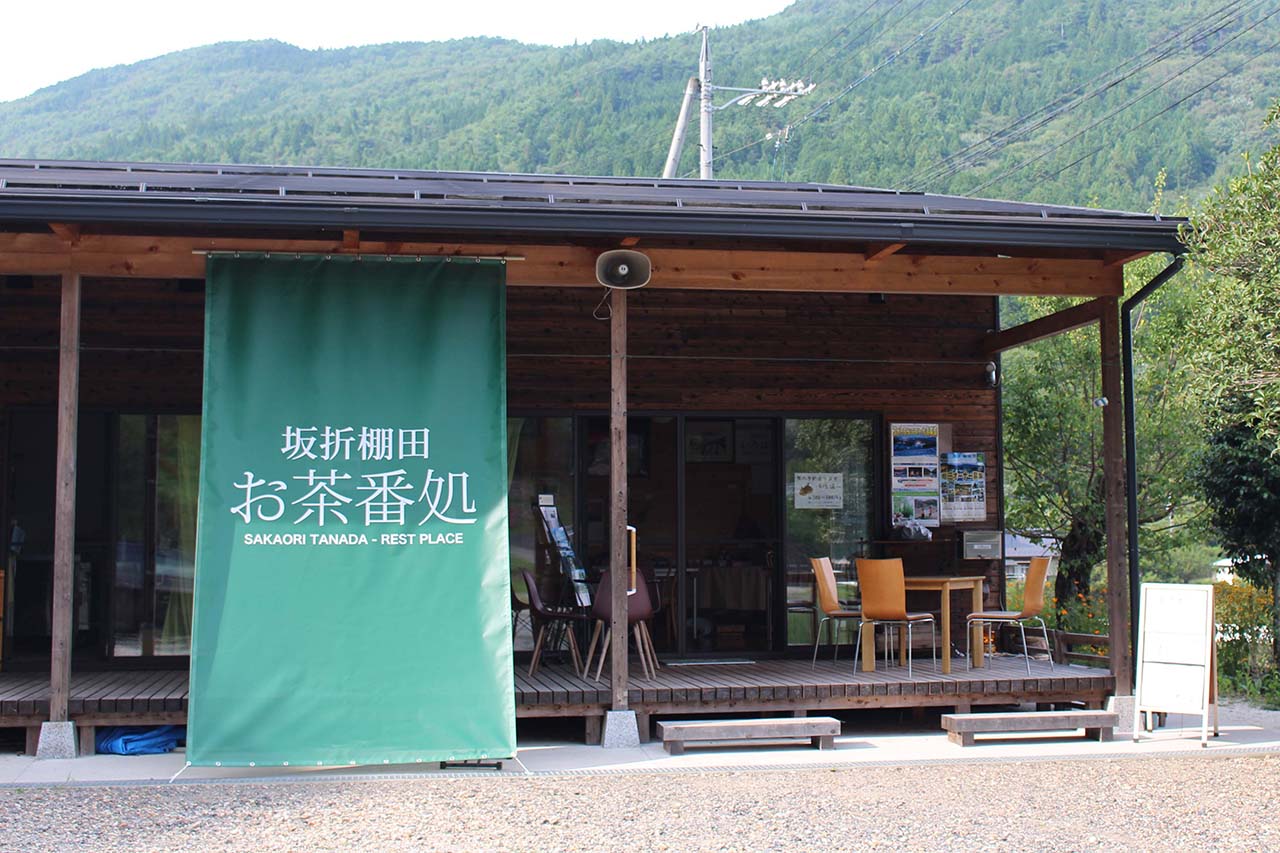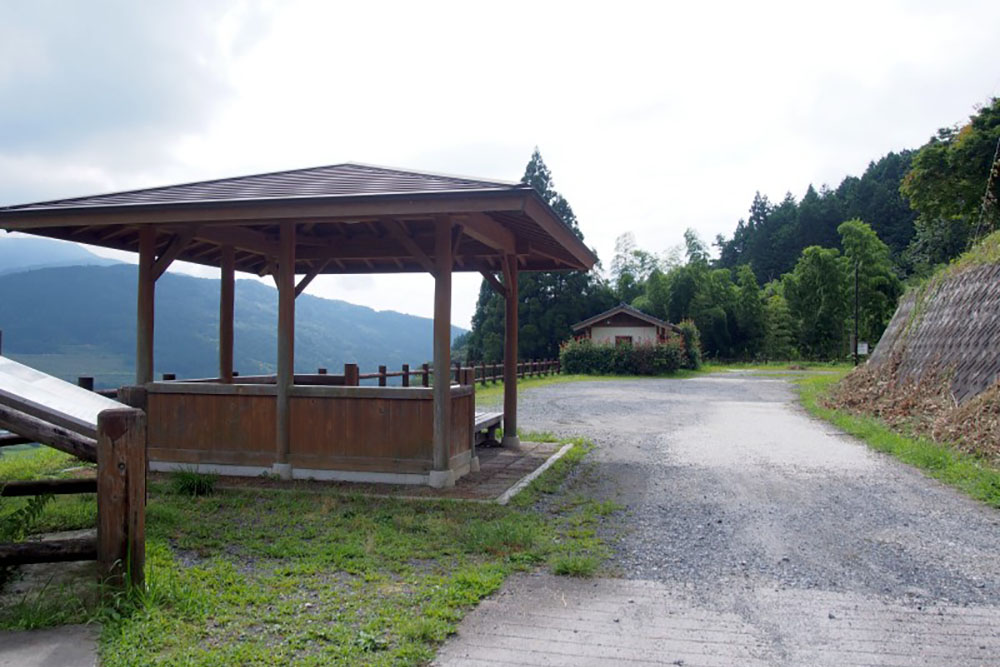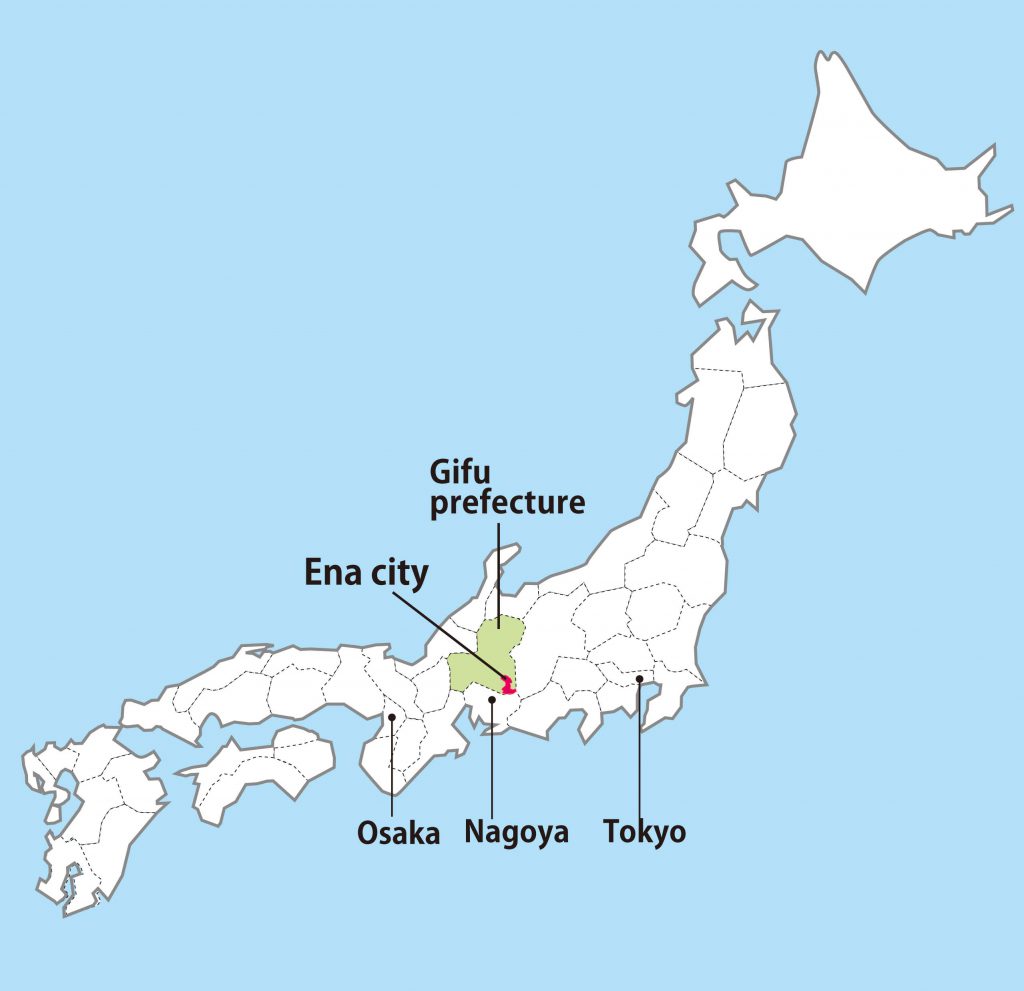The Sakaori terraced rice fields
The Sakaori terraced rice fields were first built in the 1600’s. The current landscape was completed in the late 1800’s. The main feature of the landscape is the advanced stone masonry used for terracing. This beautiful masonry was crafted by a group of masons, known as “Kurokuwa”, who were also responsible for building the stone wall around Nagoya castle. Local houses are also close to the terraced rice fields, so it is possible to enjoy the nostalgic atmosphere of traditional Japan.
The water that flows in the terraced rice fields comes from Sakaori river. The upper part of the river also has a wetlands area, where rare plants grow. The water is a rich source of nutrients for the rice fields. The water from the river is very cold, so it needs to be warmed before it enters the rice fields. The water is warmed by it flowing through small, skillfully laid out irrigation channels.
Our predecessors built the terraced rice fields over many years, using their knowledge and wisdom. But it is getting more difficult to maintain the fields, due to aging of the local population. Therefore, we have been improving the farm roads and the rice fields to ease access to the terraced rice fields and the efficiency of the farm work, while still keeping the traditional landscape.
In September 1999, the Sakaori terraced rice fields were recognized by the Ministry of Agriculture, Forestry and Fisheries as one of Japan’s 100 selected terraced rice fields. Then in 2003, it was used as the venue for the 9th national terraced rice field summit and after that it became more widely known.
Characteristics of Sakaori terraced rice fields
● Most of the rice fields were built in the 1600s
● The stone terraces are strong while remaining beautiful to look at.
● The overall individual area of each of the terraced rice fields is quite large in comparison with most other terraced rice fields.
● There is plenty of cool, natural spring water.
● The fields have well-designed irrigation channels to utilize the natural spring water from the surrounding hills.
● The terraced rice fields are surrounded by the houses of the local inhabitants.
Sakaori terraced rice fields -basic information
● Site area – 19 hectares
● Terraced rice field actual area – 14.2 hectares (according to a survey by Ena city in 1997)
● Elevation of terraced rice fields – 410m to 610m
● Number of terraced rice fields – 360 fields (as of March 2003)
● Number of farmhouses owning the terraced rice fields – 36
● Slope of terraced rice fields – from 1:4 to 1:7
● Height of stone walls surrounding the terraced rice fields – 2.3m
Location of Sakaori terraced rice fields
Nakanoho town
Nakanoho is located in the northern part of Ena city, in the basin of the Kiso river. The town is surrounded by mountains, which reach heights of over 800m – including Mount Kasagi, which reaches 1127.9m at its peak. The river of the same name (Nakanoho river) also flows through the middle of the town. The population of the town is 1557 people, split among 543 households (according to data in 2018). The town is mainly agricultural and surrounded by rich nature.
Area around Mount Kasagi
The area is made up of the 3 towns at the foot of Mount Kasagi – Nakanoho, Kasagi and Iiji. The area forms the southern tip of the Mino Hida mountain range, with the Kiso river flowing from east to west through the area.
Ena city
Ena city is located approximately 60km from Nagoya city. Located in the south-eastern corner of Gifu prefecture, the city borders both Aichi and Nagano prefectures. It is an area that is blessed with an abundance of nature and beautiful scenery.
Facilities of Sakaori terraced rice fields
Nagomi no ie
 Nagomi no ie is the information center for the Sakaori terraced rice fields area and is located in the middle of the terraced rice fields. It is a one-story building that houses 2 meeting rooms, toilets, male and female shower facilities, a cafeteria/shop (including a tea room), a wooden deck and a parking lot.
Nagomi no ie is the information center for the Sakaori terraced rice fields area and is located in the middle of the terraced rice fields. It is a one-story building that houses 2 meeting rooms, toilets, male and female shower facilities, a cafeteria/shop (including a tea room), a wooden deck and a parking lot.
Tenbo Hiroba-scenic point
 The Tenbo Hiroba-scenic point is located on the western side of Nagomi no ie and overlooks the terraced rice fields. It has multi-purpose toilets and a parking lot. It also has a bench that is under cover and provides the perfect spot to view and take pictures of the terraced rice fields.
The Tenbo Hiroba-scenic point is located on the western side of Nagomi no ie and overlooks the terraced rice fields. It has multi-purpose toilets and a parking lot. It also has a bench that is under cover and provides the perfect spot to view and take pictures of the terraced rice fields.
Biotope
 In 2007, we created a biotope to observe various local organisms that inhabit the terraced rice fields. It is inhabited by frogs, dragonflies and loach to name but a few. We hold nature experiences for the local children of Nakanoho each year.
In 2007, we created a biotope to observe various local organisms that inhabit the terraced rice fields. It is inhabited by frogs, dragonflies and loach to name but a few. We hold nature experiences for the local children of Nakanoho each year.
Water mill
 There used to be watermills at six different locations on the Sakaori river. The power from the watermills was used for milling rice. However, around 1961, their role ceased due to changing economic circumstances. The current, existing watermill was restored to show the traditional method of milling rice.
There used to be watermills at six different locations on the Sakaori river. The power from the watermills was used for milling rice. However, around 1961, their role ceased due to changing economic circumstances. The current, existing watermill was restored to show the traditional method of milling rice.







